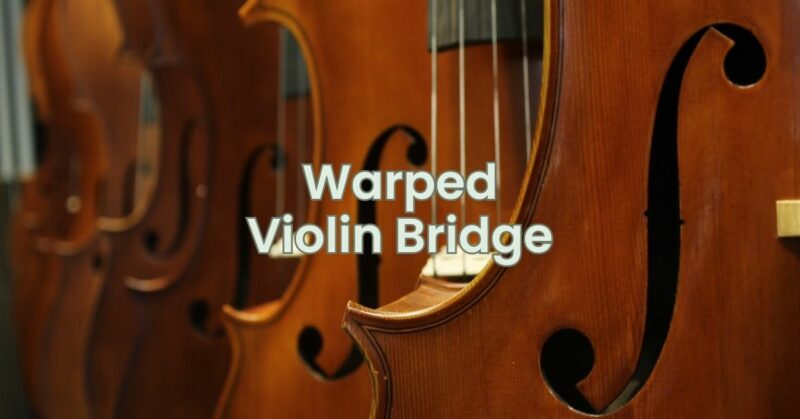A warped violin bridge is a common problem that can impact the playability, tone, and stability of the instrument. A bridge that is not properly shaped or has become warped over time can affect the string action, string alignment, and overall sound production. In this article, we will explore the causes of a warped violin bridge and provide potential solutions to rectify the issue.
- Causes of Warping: Several factors can contribute to a violin bridge becoming warped. Understanding the causes can help prevent or address the problem effectively:
- String Tension: Over time, the constant tension exerted by the violin strings can cause the bridge to warp. This is particularly true if the strings are not regularly tuned and adjusted, resulting in uneven pressure on the bridge.
- Changes in Humidity and Temperature: Fluctuations in humidity and temperature can cause the wood of the bridge to expand or contract. Exposure to dry conditions can lead to shrinkage and warping, while high humidity levels can result in the wood swelling and distorting.
- Improper Fitting or Placement: A bridge that is not properly fitted or aligned can be more susceptible to warping. Incorrect placement or inadequate contact between the bridge feet and the soundboard can lead to uneven pressure distribution and potential warping.
- Recognizing the Signs of a Warped Bridge: It is important to be able to identify the signs of a warped violin bridge. Common indicators include:
- Uneven String Height: A warped bridge may cause the strings to sit at different heights, leading to uneven action across the fingerboard. This can affect playability and hinder proper bowing technique.
- String Misalignment: A warped bridge can cause the strings to be misaligned, resulting in inaccurate intonation and difficulties with playing in tune.
- Buzzing or Muffled Sound: A warped bridge can affect the contact between the strings and the soundboard, leading to buzzing or a loss of tonal clarity.
- Potential Solutions: Addressing a warped violin bridge requires careful assessment and, in some cases, professional assistance. Consider the following solutions:
- Adjusting String Tension: Ensure that the strings are properly tensioned and regularly tuned. This can help alleviate some warping caused by uneven pressure distribution.
- Regulating Humidity: Maintain a stable humidity level in the instrument’s environment to minimize the impact of moisture changes on the bridge. Use a humidifier or dehumidifier as needed, especially in extreme weather conditions.
- Professional Evaluation and Adjustment: If the bridge is severely warped, it is advisable to seek assistance from a professional violin maker or luthier. They can assess the bridge, determine if it can be repaired or needs replacement, and make the necessary adjustments or replacements to restore proper functionality.
- Bridge Replacement: In some cases, a severely warped bridge may need to be replaced. A new bridge, properly fitted and shaped, can ensure optimal playability and sound production.
- Preventive Measures: To minimize the risk of a bridge warping in the future, consider the following preventive measures:
- Regular Maintenance: Maintain proper string tension and tune the instrument regularly to minimize stress on the bridge.
- Humidity Control: Store the violin in a controlled environment, ideally with a humidity level between 40-60%. Use a hygrometer to monitor humidity levels and make necessary adjustments.
- Professional Check-ups: Schedule periodic check-ups with a violin maker or luthier to assess the instrument’s condition, including the bridge, and make any necessary adjustments or repairs.
Conclusion: Dealing with a warped violin bridge can be frustrating, as it can significantly affect playability and sound quality. By understanding the causes and recognizing the signs, you can take appropriate measures to address the issue. Whether it requires minor adjustments, professional evaluation, or bridge replacement, ensuring the bridge is properly shaped and aligned is crucial for optimal performance. With regular maintenance and careful attention to environmental conditions, you can help prevent future instances of a warped bridge, allowing your violin to resonate with beautiful tones and inspire your musical journey.


